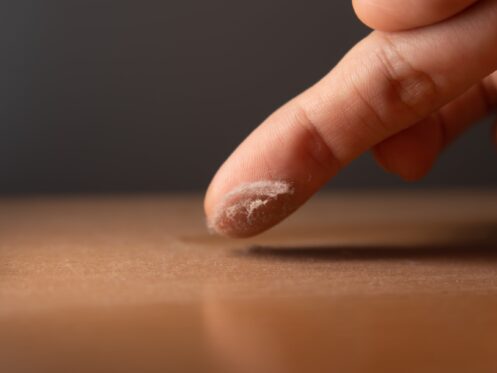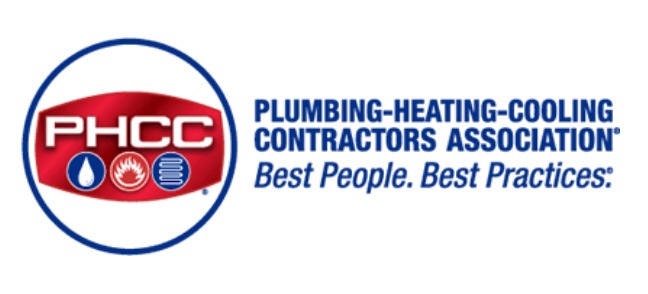Poor air quality can affect you anywhere, from the outdoors to the inside of your workplace. If you feel unwell when you’re inside your home, there may be contaminants in your indoor air that are causing your symptoms. Knowing the signs of poor indoor air quality can help you make appropriate changes that will reduce these contaminants. After all, your home should be a safe haven from the pollution and particulates that are outside. Here are some symptoms of poor indoor air quality and ways to combat them by keeping your HVAC system maintained and incorporating add-ons and standalone devices that help fight against poor indoor air.
Common Indoor Air Quality Issues
The types of particulate matter in a home can vary depending on factors such as whether you have pets, how frequently you run your HVAC system, the type of air filter you use, relative humidity levels, and the level of ventilation in your home. Common contaminants include pollen, pet dander, mold spores, dust, dust mites, and volatile organic compounds (VOCs). VOCs are chemicals found in cleaning products, building materials, air fresheners, and many other sources.
Exhausting the air inside your home to the outdoors is ideal, but many homeowners keep their doors and windows closed to help retain conditioned air. This is also an effective way to keep pests outside where they belong. During allergy season, it’s beneficial to keep your windows and doors closed during times of the day when pollen levels are extremely high.
If your home has a high relative humidity level, mold spores may be prevalent in the air. Mold can cause allergies, asthma, and respiratory symptoms like shortness of breath. It’s ideal to keep your indoor relative humidity between 35% and 50%.
Symptoms of Poor Indoor Air Quality
Poor indoor air quality can affect your body in several ways. For people who are prone to allergies, particulate matter can cause itchy eyes, sneezing, coughing, and a runny nose. During the spring months, it can be difficult to discern between outdoor and indoor allergies. Other symptoms that can result from poor indoor air quality (IAQ) include headaches, nausea, extreme fatigue, brain fog, and even gastrointestinal upset. If your symptoms seem to worsen when you’re at home, the problem probably lies within your residence and not outdoors.
Pay attention to your skin’s health. Dry air can lead to dry and irritated skin and sinuses. If you encounter a high prevalence of allergens in your air every day, you may frequently experience hives and other rashes.
Issues With Your HVAC System
Good indoor air quality is necessary for your health and can also help protect the integrity of your HVAC system. If particulate matter accumulates on the interior components of your heating and cooling equipment, it can cause these units to work harder to meet your indoor comfort needs. Over time, these components can experience wear and tear, eventually breaking down.
If you need frequent repairs, your indoor air quality (IAQ) may be the issue. You may also have an IAQ problem if you find yourself replacing your heating and cooling equipment more often than usual. Furnaces and air conditioners usually last approximately 15 to 20 years, which reflects the use of routine maintenance to catch minor issues and fix them early on.
Your air filter should last approximately 30 to 90 days, depending on the type of filter you’re using. Additionally, the amount of time you run your HVAC system will impact filter longevity. If your filter seems to be getting clogged quickly, you may have a high prevalence of particulate matter in your indoor air.
Leaving a clogged filter in your furnace can strain your equipment and decrease airflow through your system. The more clogged your filter becomes, the worse your indoor air quality will become. Eventually, particulates will pass into your ductwork and out through the vents in your living spaces.
Improving the Quality of Your Indoor Air
Some very effective methods can improve indoor air quality. First, make sure you regularly change your furnace filter according to the manufacturer’s instructions. Second, use a filter that provides adequate filtration. The Minimum Efficiency Reporting Value (MERV) reflects the effectiveness of a filter.
The higher the MERV rating on a filter, the more particulate matter it will be able to remove from the air. Just don’t go over a MERV rating of 12 if you have a standard furnace. Anything over that rating will cause too much airflow restriction and can lead to equipment strain, hot and cold spots in your home, and a spike in energy consumption.
Consider installing a whole-house air filtration system on your HVAC system. This equipment will include another layer of filtration that can remove as much as 99.97% of the particulate matter in your indoor air. It can usually handle more airflow restrictions than your furnace, allowing you to use higher-quality filters.
If the relative humidity in your home rises above the recommended 50%, this can promote the growth of mold. Additionally, more particulate matter can be held in humid air. You can control the humidity in your home using a whole-house dehumidifier for high levels of moisture. A whole-house humidifier can add moisture back into dry air.
Whole-home equipment is much more effective than portable models that only address a small amount of square footage at one time. Also, you can protect the interior components of your heating and cooling equipment while also safeguarding the integrity of your ductwork. Fluctuating humidity levels can lead to structural damage and harm to items like flooring. Dry air can cause wood to contract, while high humidity can lead to wood expanding. These fluctuations can cause warping and permanent damage.
If you and your family experience poor indoor air quality (IAQ), you may get sick frequently, experiencing a variety of nasal symptoms, congestion, and other illnesses. If you are concerned about mold and other microbes in your air, a UV light is a great upgrade to consider. Specifically, a UV-C light installed in your HVAC system will damage the DNA of any bacteria, viruses, or pathogens present in your air.
This will help keep you and your family healthy and safe all year. To avoid radiation exposure, these lights should be installed by professionals. Ongoing maintenance includes cleaning the surface of the light and replacing it yearly to ensure its effectiveness.
Meade’s Heating and Air is available to help you with all your indoor air quality needs. An assessment of your indoor air quality can help determine what kind of contaminants you’re dealing with. We can also provide duct sealing to further improve the quality of your indoor air. Our company can install humidifiers, dehumidifiers, whole-home air filtration, UV air sanitization, and air filters. And our technicians can also install, maintain, and repair heating and cooling equipment.
Contact Meade’s Heating and Air for indoor air quality assistance in Sterling, VA today.




